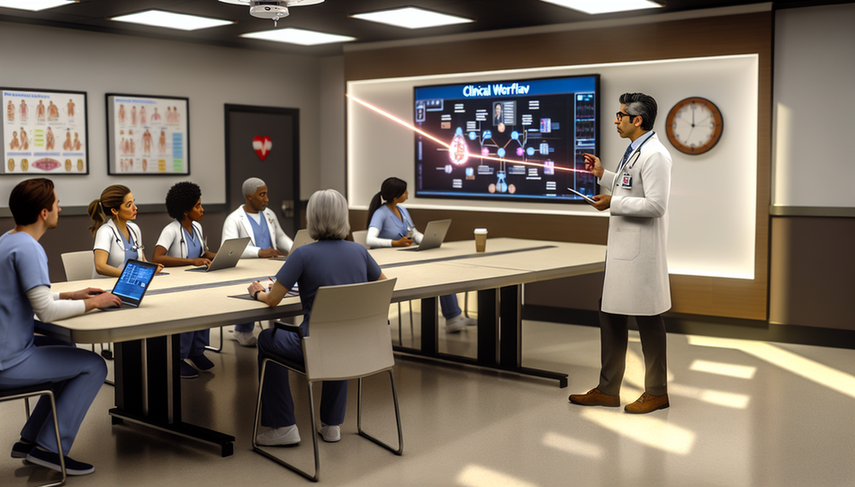Staff Training and Internal Communication: Key Strategies for Enhancing Clinical Workflows and Team Coordination
In the current clinical environment, staff training and internal communication are essential elements for optimizing clinical workflows. The complexity of modern healthcare systems requires effective team coordination to ensure that patients receive the best possible care. This article explores how continuous training and effective communication can significantly improve efficiency and quality of care in clinical settings.

Importance of Training and Communication in Clinical Workflows
Staff training is fundamental to ensure that all members of the healthcare team are up-to-date with the latest practices and technologies. A study on the implementation of tobacco cessation support tools in electronic health records highlights how proper training can improve the adoption and effectiveness of new technologies in the clinical environment. Training not only enhances technical competence but also increases staff confidence in using new tools and processes [1].
On the other hand, internal communication is crucial for team coordination. A study on the experience of information technology services at UW Medicine during the COVID-19 pandemic underscores the importance of optimized communication to manage rapid changes in clinical workflows. The integration of information technology with the hospital's command structure allowed for an agile and effective response to clinical needs [2].
Furthermore, the implementation of an interdisciplinary approach to improve surgical antimicrobial prophylaxis in orthopedic surgery demonstrated that continuous communication and education are essential for maintaining compliance with clinical guidelines. This approach not only improved the appropriateness of prescriptions but also fostered a collaborative work environment [3].
Conclusions
Staff training and internal communication are fundamental pillars for enhancing clinical workflows. Continuous training ensures that staff are prepared to face the challenges of the modern clinical environment, while effective communication facilitates team coordination and the implementation of necessary changes. By investing in these aspects, healthcare institutions can improve the quality of care and satisfaction for both staff and patients.
Referencias
- [1] Monitoring the Implementation of Tobacco Cessation Support Tools: Using Novel Electronic Health Record Activity Metrics
- [2] Responding to COVID-19: The UW Medicine Information Technology Services Experience
- [3] An interdisciplinary approach to improve surgical antimicrobial prophylaxis
Created 23/1/2025
